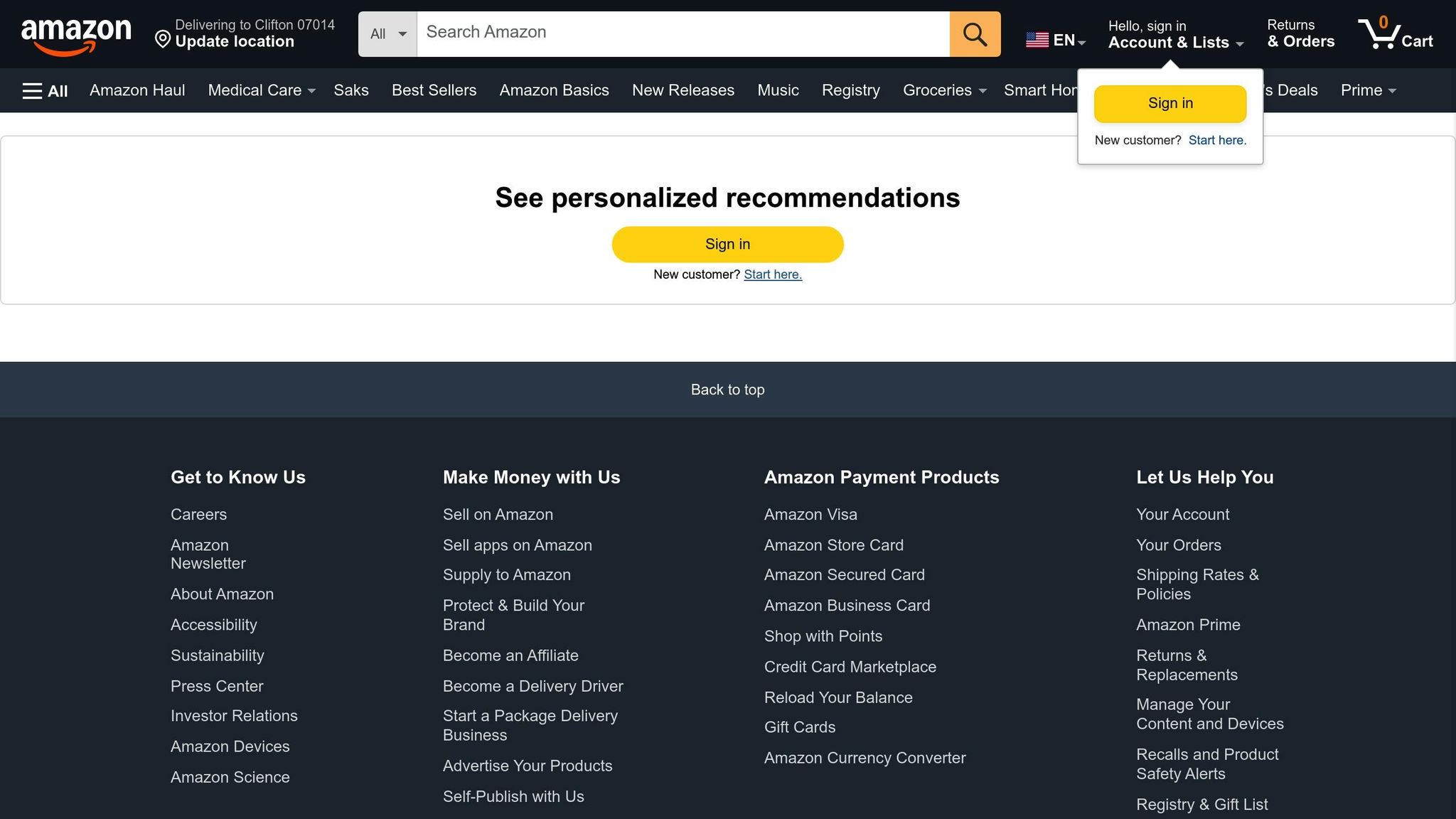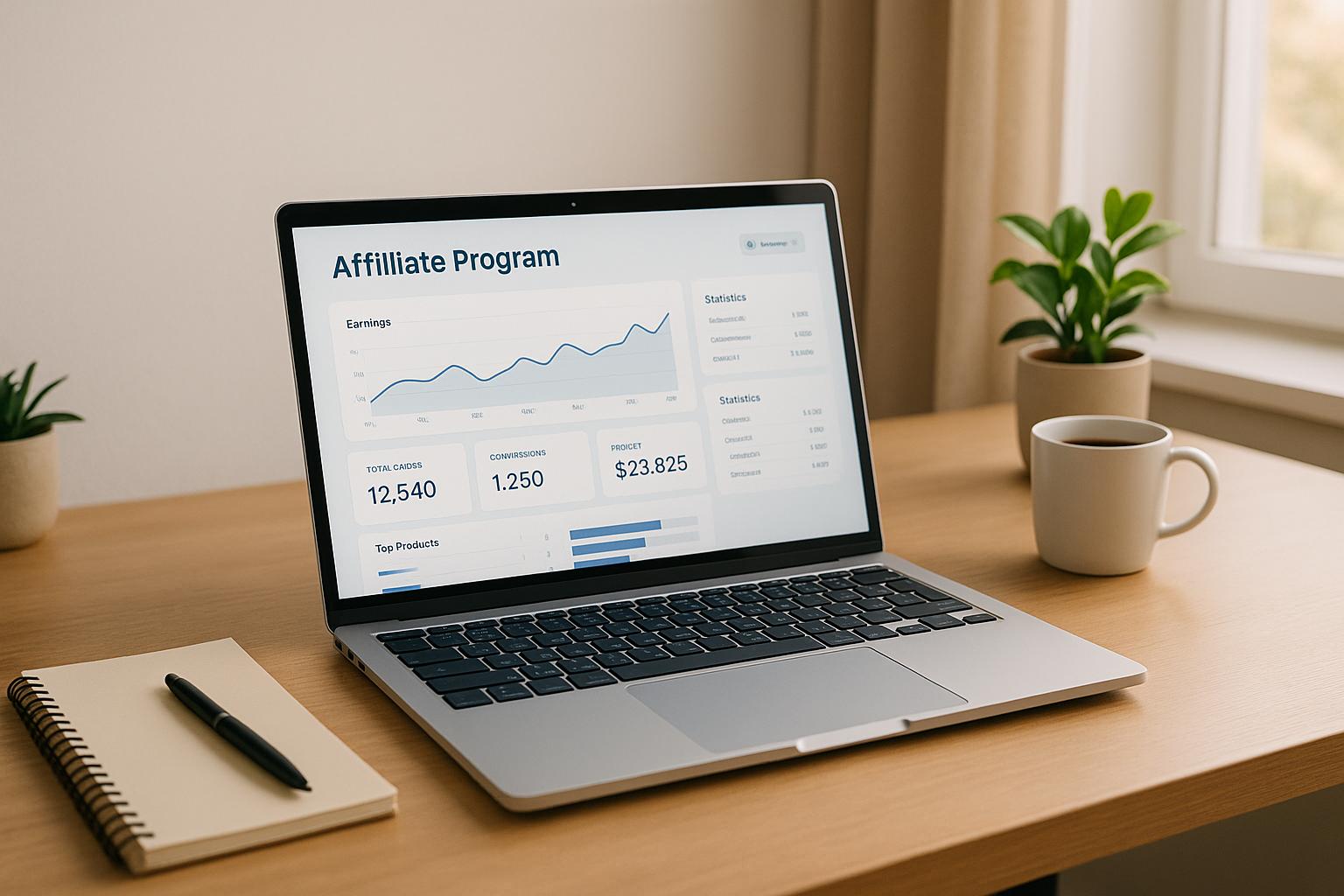Etsy and Amazon Handmade are top platforms for selling handmade items, but which one pays more? Here’s a quick breakdown:
- Etsy Fees: $0.20 per listing, 6.5% transaction fee, and 3% + $0.25 payment processing fee (U.S. sellers). Offsite ads cost 12–15% of attributed sales.
- Amazon Handmade Fees: 15% referral fee. The $39.99 monthly Professional Seller fee is waived after the first month.
Example Earnings for a $100 Sale:
- Etsy: $89.05 (after $10.95 in fees)
- Amazon Handmade: $85.00 (after $15.00 in fees)
Key Differences:
- Etsy: Best for unique, customizable items and part-time creators. Lower fees but higher competition.
- Amazon Handmade: Ideal for high-volume sellers and full-time artisans. Larger audience but stricter seller requirements.
Quick Comparison
| Criteria | Etsy | Amazon Handmade |
|---|---|---|
| Fee Structure | Lower, more complex | Flat 15% referral fee |
| Audience Size | 95.5M active buyers | 3.1B monthly visitors |
| Best For | Custom/unique items | High-volume sellers |
| Setup Process | Quick and easy | Strict application process |
| Fulfillment Options | Self-fulfillment | FBA or FBM |
Bottom Line: Choose Etsy for niche, personalized products and Amazon Handmade for scaling a larger handmade business.
Fee Structures and Costs
Etsy Fees
Etsy has a fee structure that includes three main charges. First, there’s a $0.20 listing fee per item, which remains active for four months. If the listing expires or the item sells, you’ll need to pay another $0.20 to relist it. Etsy also takes a 6.5% transaction fee on the total sale price, which includes shipping and taxes. For U.S. sellers, there’s an additional payment processing fee of 3% + $0.25 per transaction. Lastly, Etsy charges for Offsite Ads, with a 15% fee for sellers making under $10,000 annually and 12% for those exceeding that threshold.
| Etsy Fee Type | Amount |
|---|---|
| Listing Fee | $0.20 per item |
| Transaction Fee | 6.5% of total sale |
| Payment Processing | 3% + $0.25 per transaction |
| Offsite Ads | 12–15% of attributed sales |
Amazon Handmade Fees

Amazon Handmade operates differently. It charges a flat 15% referral fee on every sale. While a Professional Seller account, usually priced at $39.99 per month, is required, Handmade sellers can have this fee waived after their first month of selling. This waiver can save sellers up to $480 annually, making it a significant advantage compared to standard Amazon seller accounts.
Cost Impact on Sales
Let’s break it down with an example of a $100 item:
On Etsy:
- Listing fee: $0.20
- Transaction fee (6.5%): $6.50
- Payment processing fee (3% + $0.25): $3.25
- Total fees: $10.95
- Net earnings: $89.05
On Amazon Handmade:
- Referral fee (15%): $15.00
- Total fees: $15.00
- Net earnings: $85.00
Etsy’s structure, while more complex, can be more cost-effective for higher-priced items. However, the recurring listing fees may add up for sellers with large inventories or slow-moving products. These nuances in fee structures can have a direct impact on your net earnings and should be a key factor when deciding which platform aligns best with your pricing and sales volume.
Next, we’ll dive into market size and customer behavior to further guide your decision-making.
Amazon Handmade vs Etsy - Which is Better for Artists?
Market Size and Customer Behavior
Beyond fee structures, the demographics and behaviors of customers on each platform play a key role in shaping seller income.
Etsy's Market Demographics
Etsy attracts a substantial audience, boasting 95.5 million active buyers and drawing 400 million visitors each month. A significant portion of this traffic - 56.86% - comes from the United States. The platform's user base skews younger, with nearly two-thirds of visitors aged 18-44. Additionally, around 80% of Etsy shoppers are women aged 18-35.
Buyers are particularly drawn to Etsy for several reasons:
| Buyer Characteristic | Impact on Sales |
|---|---|
| Personal Connection | Shoppers engage with seller stories. |
| Unique Product Focus | Willingness to pay premium prices for one-of-a-kind items. |
| Customization Interest | High demand for personalized products. |
| Price Sensitivity | Balancing value with the uniqueness of items. |
These traits highlight Etsy's appeal to a specific customer type, which contrasts sharply with the broader audience found on Amazon Handmade.
Amazon's Customer Base
Amazon Handmade benefits from the massive reach of the Amazon platform, which sees 3.1 billion visits each month. Amazon's reputation for reliability and fast shipping significantly enhances conversion rates.
Prime membership is a major driver of spending on Amazon. Prime members spend an average of $1,400 annually, compared to $600 for non-members. Additionally, 93% of Prime users renew their membership after one year, and 85% visit the site weekly.
Sales Performance Metrics
The customer engagement patterns on Etsy and Amazon Handmade differ significantly, reflecting their unique audiences. On Etsy, repeat customers account for up to 40% of total store sales, with mobile app visits contributing 25% of traffic.
Here's a comparison of key performance factors for the two platforms:
| Performance Factor | Amazon Handmade | Etsy |
|---|---|---|
| Platform Reach | 3.1 billion visitors | 400 million visitors |
| Customer Focus | General shoppers with Prime benefits | Buyers seeking handmade and vintage items |
| Purchase Frequency | 46% of Prime members shop weekly | Seasonal and category-dependent |
| Customer Loyalty | 98% Prime renewal after 2 years | Increasing loyalty via Etsy Insider program |
Etsy’s niche focus fosters deeper customer engagement, while Amazon Handmade offers a much larger audience. This difference can significantly influence seller earnings, depending on the product category and target market.
Platform Features for Sellers
Both Amazon Handmade and Etsy provide tools and features that can directly impact seller earnings. Let’s take a closer look at how their shipping options, advertising tools, and store design features help sellers grow their businesses.
Shipping Solutions
When it comes to shipping, Amazon Handmade and Etsy take different approaches. Amazon gives sellers two main choices: Fulfillment by Amazon (FBA) and Fulfilled by Merchant (FBM). FBA allows sellers to tap into Amazon’s extensive logistics network, handling storage, packaging, and shipping on their behalf. FBM, on the other hand, lets sellers take full control of their shipping process.
Etsy’s shipping system is a bit different, offering sellers discounts of up to 30% on shipping costs through Etsy Shipping. Sellers in the US, UK, Canada, Australia, and India can buy shipping labels directly from the platform and even add shipping insurance if needed.
| Shipping Feature | Amazon Handmade | Etsy |
|---|---|---|
| Fulfillment Options | FBA and FBM | Self-fulfillment |
| Label Purchase | Through Seller Central | Direct platform integration |
Advertising Options
Both platforms provide advertising tools, but their approaches vary:
- Etsy: Sellers can use on-site ads with a pay-per-click model or opt into off-site ads, which work on a commission-based system.
- Amazon Handmade: Sellers can promote their products through a sponsored products program, which also operates on a pay-per-click basis.
Store Design Options
Etsy gives sellers plenty of creative freedom to brand their shops. Customization options include shop banners, icons, owner photos, and featured item arrangements. For those subscribed to Etsy Plus, additional layout and design features are available.
Amazon Handmade focuses on storytelling through artisan profiles and offers three storefront templates: Marquee, Highlight, and Product Grid. Sellers also get access to:
- Customizable product listings with personalization options
- Configurable tiles that mix products, images, text, and even video content
While Etsy emphasizes creative control to help sellers shape their store’s unique look, Amazon Handmade leans into product customization and storytelling within its well-established marketplace. Both approaches aim to help sellers build their brand and connect with customers in meaningful ways.
sbb-itb-fd652cc
Seller Income Data
Seller income data sheds light on how platform features translate into tangible earnings. Taking a closer look at Etsy, we can uncover income patterns and compare them to Amazon Handmade.
Top Seller Earnings
Some of Etsy's top sellers bring in as much as $65,000 per month. This success is often tied to popular categories like Home & Living, which alone accounts for 34% of Gross Merchandise Sales. To put this into perspective, the Home & Living category generates a staggering $3.71 billion in annual sales, followed by Jewelry & Accessories at $1.96 billion and Apparel at $1.53 billion. These figures highlight the income potential within Etsy's ecosystem.
Average Seller Income
Seller income on Etsy varies widely, depending on factors like effort, time commitment, and the chosen business model:
| Seller Type | Monthly Income | Annual Income |
|---|---|---|
| Side Hustle | $100 – $500 | $1,200 – $6,000 |
| Full-Time | $1,000 – $5,000 | $12,000 – $60,000 |
| Typical Seller | $3,583 – $3,833 | $43,000 – $46,000 |
For example, Cassiy Johnson reported earning an annual profit of $63,000 before taxes through her Etsy shop. To compare, the U.S. Bureau of Labor Statistics states that craft and fine artists earned a median annual income of $52,910 in 2023.
Product Category Performance
Looking at product trends helps explain why some sellers earn more than others:
| Category | Platform Share | Growth Indicators |
|---|---|---|
| Home & Living | 34% | Leading growth |
| Jewelry & Accessories | 18% | 16% increase (Nov-Dec 2024) |
| Apparel | 14% | Moderate growth |
| Craft Supplies | 9% | Stable |
| Paper & Party Supplies | 8% | Consistent demand |
Some key trends shaping these numbers include:
- Customization continues to be a major moneymaker.
- Demand for eco-friendly and sustainable products is on the rise.
- Vintage fashion and the revival of '90s/Y2K styles are fueling growth in the Apparel category.
Interestingly, 97% of Etsy sellers work from home, and 82% run their shops solo. This low-overhead setup often translates to higher profit margins, particularly in categories with strong consumer interest.
Platform Limitations
Both Amazon Handmade and Etsy provide great opportunities for artisans to showcase and sell their creations. However, each platform comes with its own set of hurdles that can influence how much sellers earn. Knowing these challenges is key to making the most of either option.
Setup Requirements
Getting started on these platforms isn’t the same across the board. The setup process differs in complexity and time, which can impact how quickly sellers begin making sales:
| Platform | Setup Process | Requirements | Timeline |
|---|---|---|---|
| Amazon Handmade | Strict application & audit | • Proof of handmade items • Team size under 20 • Limited to 14 categories |
1–2 weeks for approval |
| Etsy | Quick registration | • Basic business info • Production partner allowed • 160+ categories available |
Same-day setup |
For Amazon Handmade, sellers must demonstrate their handcrafting skills. The platform requires products to be "made entirely by hand, hand-altered, or hand-assembled" - items from kits are not allowed. These strict requirements shape the competitive environment, making it less accessible but potentially more curated.
Market Competition
The competitive landscape on both platforms plays a big role in determining a seller's success. While fee structures impact earnings, competition also influences profitability.
Amazon Handmade connects sellers to over 300 million active Amazon shoppers globally. However, this comes with challenges like limited control over pricing, restricted access to customer data, and only 33% of sellers reporting profit margins above 20%. These factors can make it harder for sellers to maintain flexibility in their operations.
On Etsy, the story is different but no less challenging. With over 90 million active buyers, the platform is highly saturated, especially in handmade categories. This crowded space means sellers must work harder to stand out. According to Lauren Kilgore:
Competition and saturation on Etsy mean nothing when you know how to optimize and market your shop
Ultimately, success on Etsy depends on finding ways to rise above the noise. Sellers who focus on offering unique products and adopt creative marketing strategies can carve out a niche, even in a competitive environment. Balancing supply and demand remains a critical factor for both platforms.
Conclusion
Here's a quick recap of our findings:
| Business Type | Best Platform | Why It Works |
|---|---|---|
| Full-time artisans | Amazon Handmade | Access to 2.2 billion monthly visitors, FBA benefits, simplified fee structure |
| Part-time creators | Etsy | Lower upfront costs, flexible listing options, targeted audience of 95.2 million buyers |
| High-volume sellers | Amazon Handmade | Efficient fulfillment, broader market reach, streamlined operations |
| Custom/unique items | Etsy | Niche audience, better branding control, stronger buyer intent |
Amazon Handmade is an excellent choice for full-time artisans and high-volume sellers. Its vast customer base, efficient fulfillment options, and tools designed to support scaling make it ideal for those who can maintain healthy profit margins despite the 15% referral fee. If you're looking to expand and streamline operations, this platform has a lot to offer.
On the other hand, Etsy caters perfectly to part-time creators and anyone specializing in unique or customizable products. With lower upfront costs and the ability to build a strong brand presence, Etsy thrives on connecting artisans with buyers who appreciate and are willing to pay for distinctive, handcrafted items.
Ultimately, the right platform depends on your product type and sales strategy. Amazon Handmade shines with standardized handmade goods produced at scale, while Etsy is better suited for one-of-a-kind creations. Consider your business model and goals carefully to pick the platform that helps you maximize your income.
FAQs
How do Etsy's fees compare to Amazon Handmade's for sellers with large inventories?
Etsy charges a $0.20 listing fee per item and takes a 6.5% transaction fee on the total sale price, which includes shipping and taxes. For sellers managing large inventories, these costs can pile up quickly. The listing fee applies to every item, whether it sells or not, and if items need to be relisted, the fees become recurring, adding to upfront expenses.
Amazon Handmade, however, operates differently. It requires sellers to pay a $39.99 monthly subscription for its Professional selling plan but doesn’t charge per-item listing fees. While Amazon Handmade does impose referral fees on sales, the fixed monthly fee can offer more predictability. For sellers with extensive inventories, this structure might end up being more budget-friendly over time. Choosing the right platform ultimately depends on the size of your inventory, your sales volume, and your overall business objectives.
Should I handle shipping myself on Etsy or use Amazon’s Fulfillment by Amazon (FBA)?
Deciding between handling your own shipping on Etsy or using Amazon's Fulfillment by Amazon (FBA) comes down to what works best for your business goals and resources. With Etsy's self-fulfillment, you’re in charge of everything - from packaging to creating a personal customer experience. This approach lets you add that unique, handcrafted touch customers love. But as your orders increase, this can become time-consuming and demanding.
On the flip side, FBA takes care of the heavy lifting - storage, packing, and shipping - making things much easier to scale. Plus, you get perks like faster delivery options (hello, Prime!). Of course, all that convenience comes at a higher cost. To figure out the right path, weigh your budget, how much control you want over the process, and whether you’re ready to handle logistics on your own.
How do the audience demographics and buying behaviors on Etsy and Amazon Handmade differ, and how can this impact a seller's marketing approach?
Etsy tends to draw in a younger crowd, particularly those aged 25-34, with a large portion of its buyers being women. These shoppers are often on the hunt for handmade, vintage, or one-of-a-kind items, making it crucial for sellers to use storytelling and niche-focused marketing to stand out. Plus, with over 60% of purchases happening on mobile devices, having product listings that are mobile-friendly is a must.
Amazon Handmade, in contrast, taps into Amazon's enormous and varied customer base, catering to both men and women. Its global presence and well-established reputation offer sellers a chance to reach a broader audience. Additionally, Amazon provides advanced analytics tools, giving sellers insights into customer behavior and helping them fine-tune their strategies.
For Etsy sellers, the focus should be on creating a strong brand identity and connecting with specific, niche audiences. Sellers on Amazon Handmade, however, can leverage the platform’s expansive reach and rely on data-driven marketing to grow their business.


